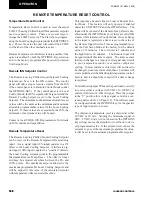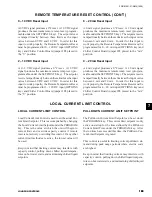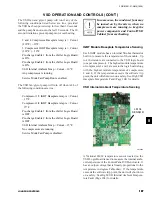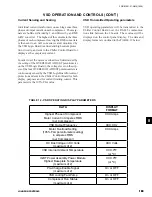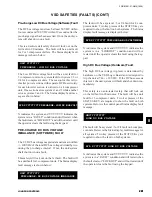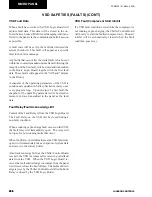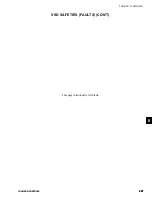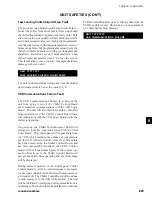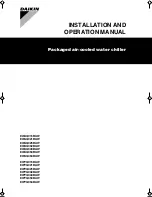
200
JOHNSON CONTROLS
FORM 201.21-NM4 (1020)
200
JOHNSON CONTROLS
MICRO PANEL
VSD SAFETIES (FAULTS)
VSD operating conditions are monitored by both soft-
ware algorithms and hardware circuitry. Both types
exist as a result of the need for both extremely fast
protection requirements such as a short circuit condition
or a slow reacting trip such as a slow rising overload
condition. To eliminate nuisance unit trips, the sensor
inputs for the VSD’s operating parameters are averaged
four times before “Software” generated unit/system fault
trips from the VSD Logic Board are initiated. These
faults cause single compressor or total unit controlled
“ramped” shutdown. Other parameters that are not fed
to the VSD Logic Board microprocessor are protected
by “Hardware” generated fault trips. Hardware trips
involve electronic circuitry that measures voltages or
currents and activate level sensitive comparators con-
nected to programmable gate arrays on the VSD Logic
Board FPGA (Field Programmable Gate Array). These
safeties operate extremely fast and provide “immediate”
shutdown, because they are not dependent upon software
program loops that operate in seconds or fractions of a
second. Outputs from the gate arrays provide a digital
signal to indicate whether a safety threshold has been
reached.
Immediate Fault shutdowns are often accompanied by
audible motor backspin due to equalizing of the differen
-
tial between discharge and suction when the compressor
is turned off while rotating at high speeds. This should
not cause concern and will not damage the chiller.
Each fault outlined in the descriptions that follow will
indicate whether it is a hardware or software generated
fault.
It will be noted the “ramped” shutdown results in
minimal compressor backspin and noise associated with
backspin. “Immediate” shutdowns will result in com-
pressor backspin and a higher noise level based upon the
differential pressure between discharge and suction.
When a VSD fault occurs, the VSD Logic Board cap-
tures VSD data in the onboard battery backed RAM.
At the same time, the VSD Board “Fault Relay” will
open, signaling the Chiller Control Board microproces-
sor to save a snapshot of system data. The VSD Logic
Board then transmits the fault data to the Chiller Control
Board microprocessor on the next comms between the
two boards. If the Chiller Control Board receives the
comms fault indication before the Fault Relay signal, it
will immediately save a snapshot of system data when
the comms fault is recognized. This also enables the
micro to capture fault data if the Fault relay fails. Both
the system and VSD fault data are then stored in the
Chiller Control Board history buffers. Any additional
faults that may occur during shutdown on the first fault
or between the first fault and the next comms will also
be stored and transmitted to the Chiller Control Board
along with the original fault data. This data will be
stored as “ALL FAULT” data.
When the control panel acknowledges a fault (via the
fault acknowledge bit in comms) the fault relay will be
reset (closed) by the VSD Logic Board and the fault
indication flag (in comms) will be reset.
The fault relay will not open when a non-running fault
occurs. In this case, the system will be inhibited from
running until the fault condition is corrected. An inhibit
message will be displayed on the panel display indicat-
ing the system is not allowed to run. Examples of this
type of fault would be the High Internal Ambient fault
and the VSD CT Plug Fault. When the chiller receives
the transmitted fault data via comms, it will save a snap-
shot of system data in the history buffer even though the
chiller is not running.
Some faults will be unit faults; other faults will be system
(specific compressor or compressor pairs) faults, de
-
pending upon the number of compressors in the chiller.
Most faults will shut down the unit/ system and allow
restart once the fault clears and the 120 sec anti-recycle
timer times out. These faults will allow up to 3 faults in
90 minutes before locking out the unit/system. Other
faults lock out the unit/system after only a single fault.
Details on individual faults are provided in the follow-
ing explanations.
A start inhibit will take place if a VSD fault condition
exists and a compressor that is not running is called to
start. The start inhibit will be cleared when the fault
condition goes away and the compressor will be per-
mitted to start.



